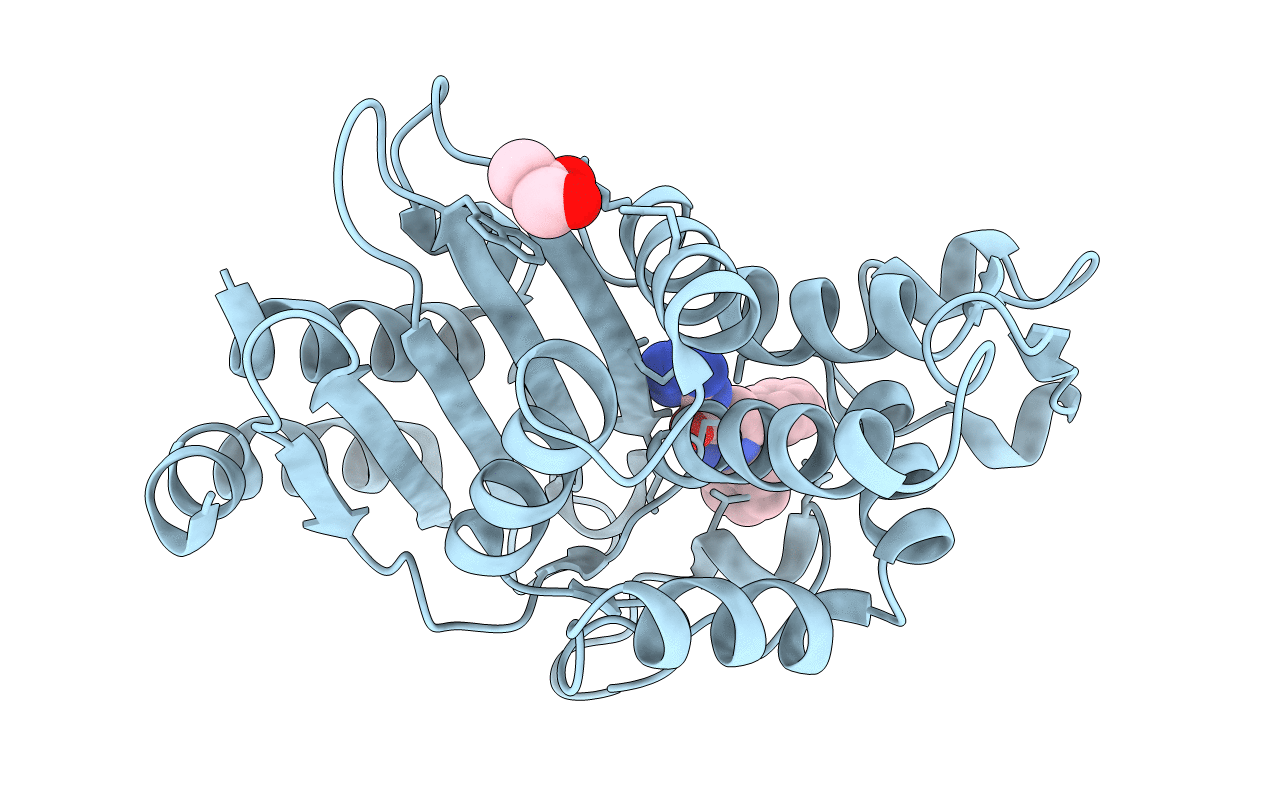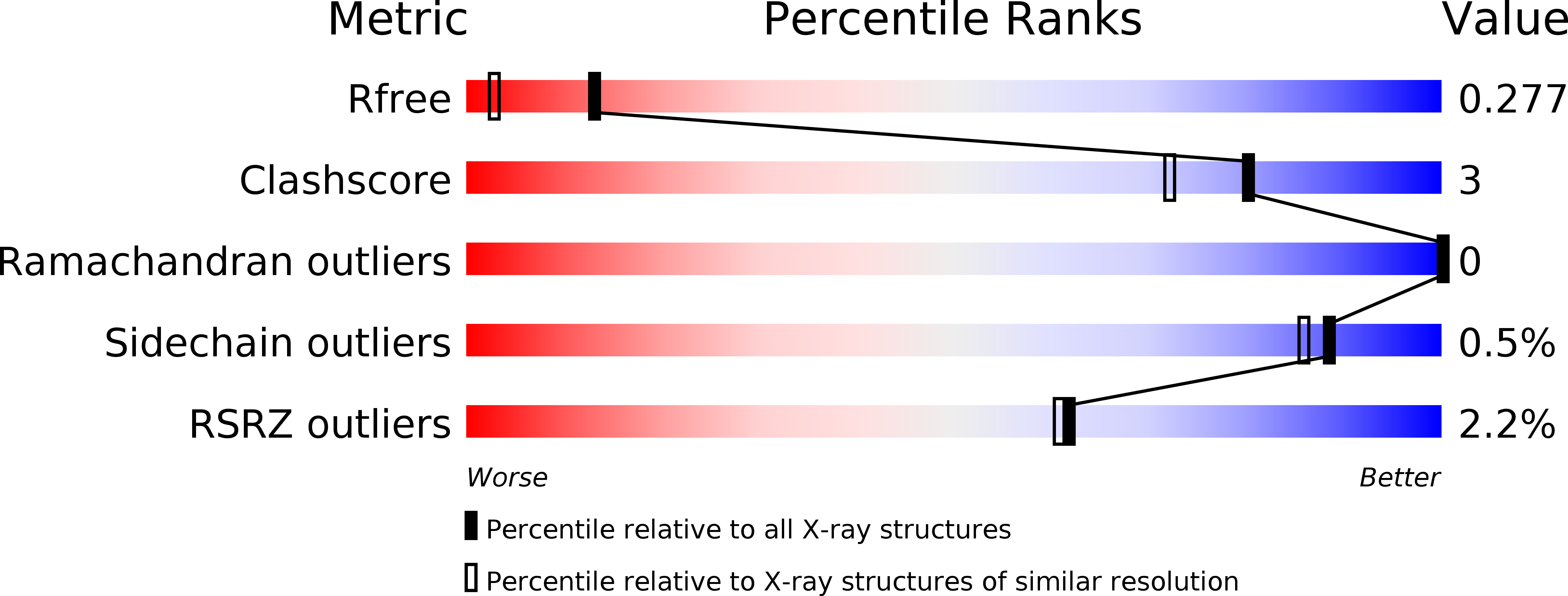
Deposition Date
2018-09-27
Release Date
2019-04-17
Last Version Date
2024-11-13
Entry Detail
PDB ID:
6MLL
Keywords:
Title:
Crystal structure of KPC-2 with compound 7
Biological Source:
Source Organism:
Klebsiella pneumoniae (Taxon ID: 573)
Host Organism:
Method Details:
Experimental Method:
Resolution:
1.86 Å
R-Value Free:
0.27
R-Value Work:
0.22
R-Value Observed:
0.23
Space Group:
P 2 21 21


